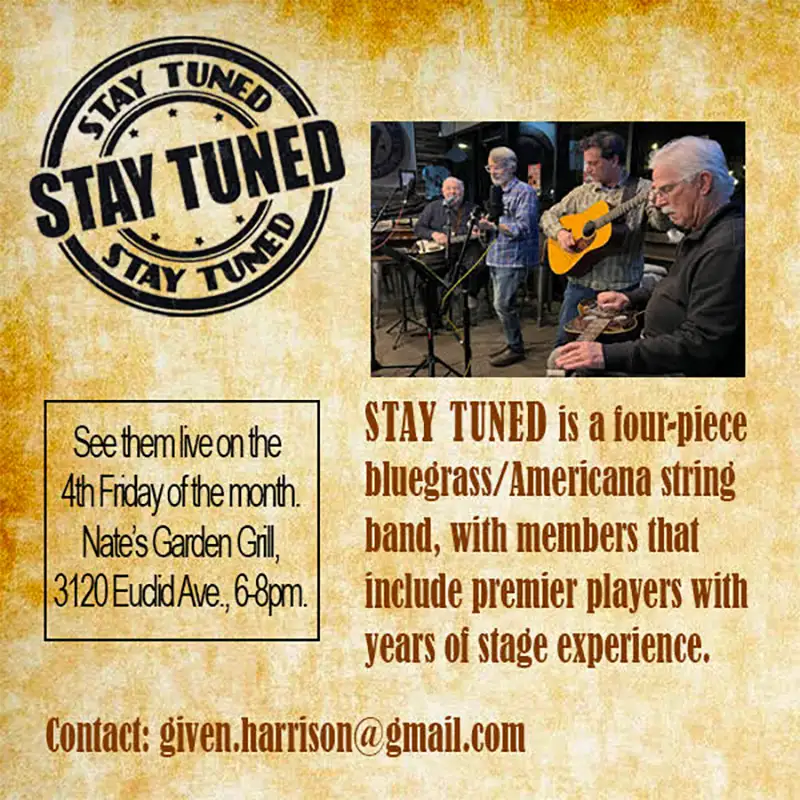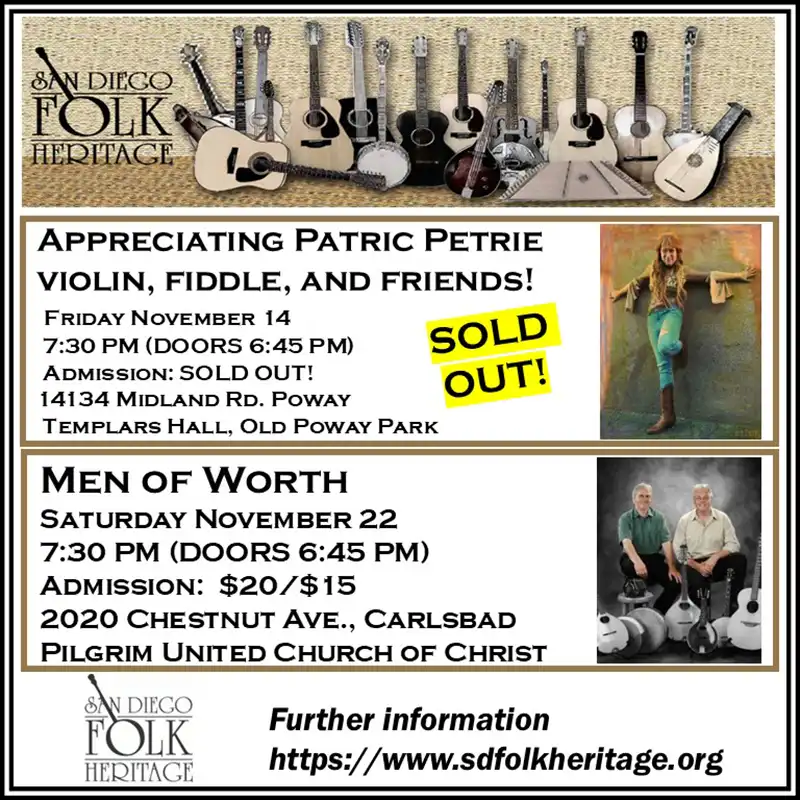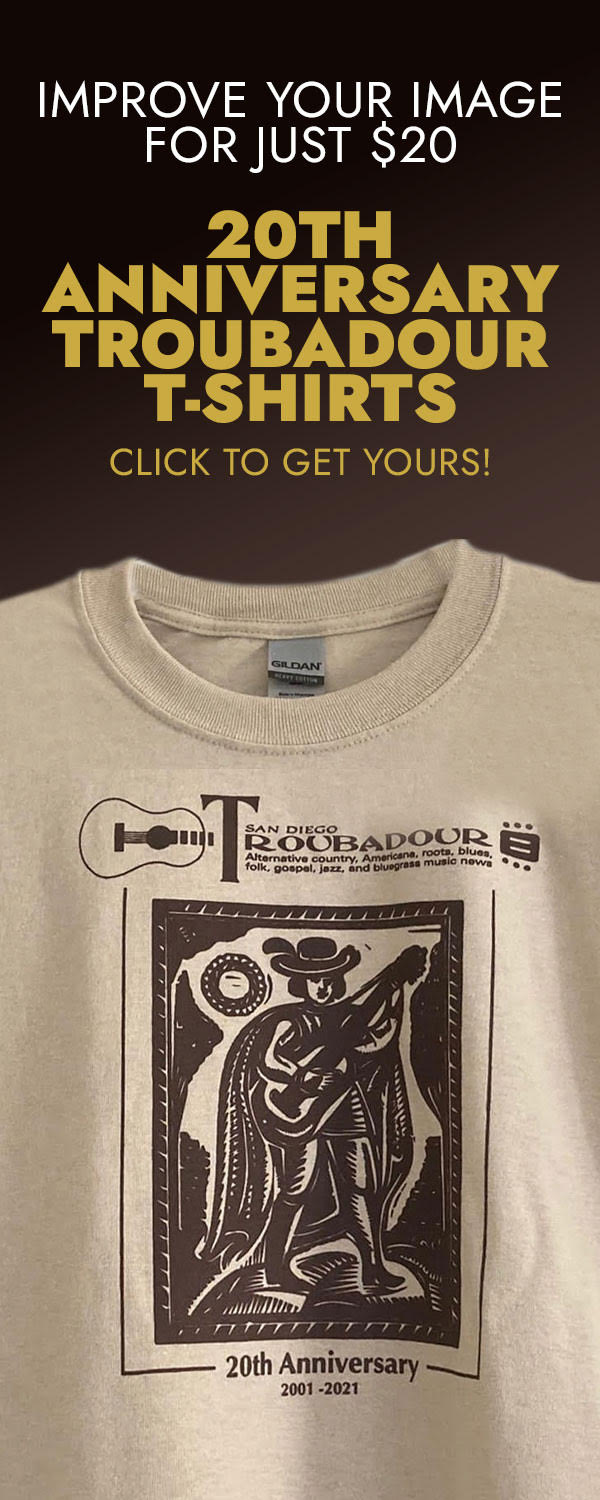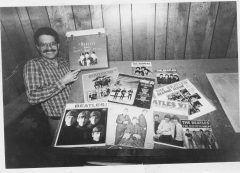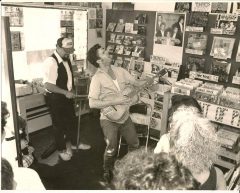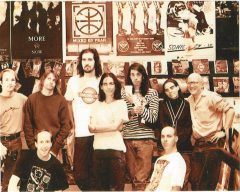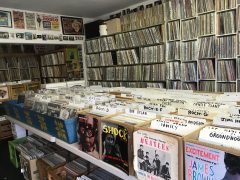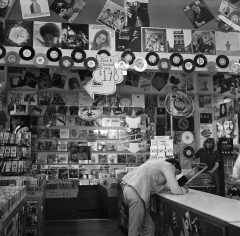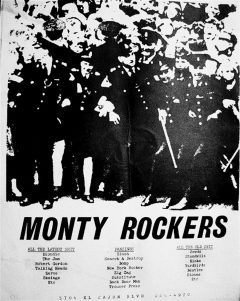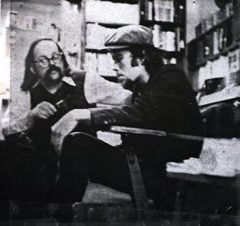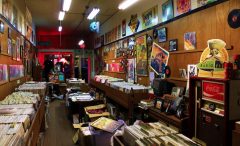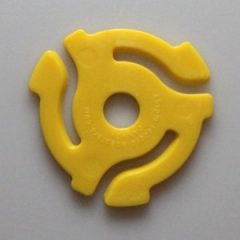Cover Story
Playing the LP Backwards: The Golden Age of Record Stores
My favorite “toy” from my childhood was a record player.
It was kid-sized friendly, suitable for playing the Golden Records series of fairy tales and nursery rhymes. But from the very beginning, I was interested in sampling my parents’ collection of vinyl. I recently calculated that my father was already 34 when Elvis Presley made his memorable debut on the Ed Sullivan Show. Dad wasn’t a likely candidate to be interested in the pending rock ‘n’ roll revolution. Nor was my mother, a native Angeleno who attended the big band concerts at the Hollywood Palladium and witnessed Francis Albert Sinatra systematically seduce a sold-out female audience from the stage of the Los Angeles Paramount Theater when she was 19. She never got over that.
I later surmised that growing up in a non-rock music household was actually beneficial in the development of an eclectic musical taste that I still enjoy today. From my mom’s record collection my little record player filled my bedroom with the sound of bagpipes (my mother’s maiden name is Dunbar, as Scottish as it comes) and the soothing voice of Doris Day singing “Que Sera, Sera.” The latter halcyon moment resulted in my lifelong crush on Doris Day, and whenever the former Doris Mary Ann Kappelhoff appears on TCM, I stop dead in my tracks and gaze at the screen in awe. Dad enjoyed listening to opera great Mario Lanza (another poor boy like Elvis who fell victim to excess) and Professor Tom Lehrer, whose twisted humor paved the way for future curmudgeons Randy Newman and Warren Zevon.
Rock ‘n’ roll would eventually weave its magic spell into our San Diego home, and with the help of my older brother we became infatuated with instrumentals—the stoic picking of “twang” master Duane Eddy, the brilliant anthems of the Ventures, and the revolutionary sounds of the left-handed King of Surf, Dick Dale. There was also that strange outer space single from England: “Telstar” by the Tornados. I would eventually learn the story of its production values and the tragic circumstances of its creator, producer Joe Meek.
The first rock record I ever called my own? Well, it was the blueprint purchase for an entire generation: Capitol Records’ release of Meet the Beatles! I bought it at Kresge’s Department Store in Grossmont Center. It wasn’t my last trip to a record store, and over the course of several decades I created a deep walking path to many other vinyl emporiums in San Diego. In this issue of the Troubadour, we celebrate the record stores of the past and salute the current crop of stores who survived the compact disc invasion and proudly still sell the discs with the round holes. Hail to thee, PVC—Polyvinyl Chloride!
Joining me on the journey are current (and past) San Diego area vinyl hounds who are all responsible, in some way, for the discs occupying my shelves: Guy Tapper, Steve Lieber, Phil Galloway, and Thomas K. Arnold.
Guy Tapper: La Mesa Music Machine was owned and operated by Claude Christiansen and his then-wife Cindy. Claude was later the Claude in Claude Coma and the IVs, a late-70s local punk band. I think the store was in business from about 1972 to 1977 or ’78. I’m pretty sure about the start date because I believe the first album I bought there, just after it opened, was Exile on Main Street. Claude had been the manager of the record department at Unimart, which is where he met Cindy, I think. An interesting factoid: one of the people that worked at the Music Machine was Steve Roach, a fairly well-known New Age recording artist. I remember Steve was just getting into performing synthesizer music when we worked at the store.
I think La Mesa Music Machine became what it was, a gathering place for knowledgeable rock music afficionados, for a couple of reasons. Claude knew the music and wanted to own a record store. His hip look and attitude, coupled with his experience running the UniMart record department, meant he knew lots of local music fans. The store itself was small and out of the way, and Claude didn’t have a lot of money for inventory, so his business relied on being a place where people could gather to listen to and learn about lesser-known artists as well as get recommendations from Claude, his employees, and other customers, and then special-order things that the larger record stores wouldn’t normally stock. This was especially true regarding imports. At that time, many prog rock bands released music in Europe, Japan, and Australia that never appeared on an American label. In addition, imported albums often had a much better sound than their American-made versions. Claude had several good sources for acquiring these imports and a better rate of success filling those special orders than the larger record retailers did. For these reasons, La Mesa Music Machine had a small but loyal core of customers that came from all over the San Diego area to browse, special order, and just hang out.
Guy Tapper is property manager for Vermont’s 10 state-owned airports.
Steve Lieber: My first fun job was at Good Karma Records (1974–75) where I managed the store at a cool beach location with a surf/ stoner vibe! I would occasionally pick up customer requests and special orders at Record Rack on El Cajon Boulevard, which carried albums by local bands on consignment. I’m pretty sure the Penetrators and the Dils handed over their early releases. They had a limited selection of jazz and other categories. For the most part, pop/rock flew off the shelves. They carried records by such singer/songwriters as Joni Mithcell, Jackson Browne, Stevie Wonder, and more. The owners mostly stayed distant but started to get really insistent about carrying more accessories and drug paraphanalia. They even put a pool table in the back for extra income.
From 1976 to 1979 I was at the legendary Tower Records in the Sports Arena, where I interacted with company sales reps and big shots. There were tons of perks for buyers like me: trips, functions, parties, concerts, records, and t-shirts. I heard the slogan “Stack ‘em high, sell ‘em low!” This was a store for devoted record freaks! I adopted rude customer service skills from the management and peers. There are too many individual and bizarre happenings to detail here. There were fun in-store appearances by Genesis, the Tubes, and the Little River Band among some others.
During 1980 to 1987, there was more of the same at Tower Records’ El Cajon Boulevard store (in the College Area). Tower Posters shared the space. We had a fun crew with work experience variations at the other Tower. The clientele was varied, with primarily college students shopping there. We had invites to local and Los Angeles company events and parties, including a hotel stay and tour of the Universal Studios back lot and a Waylon Jennings concert. Finally, after a few outside sales jobs, I started a 20-year career selling advertising at the San Diego Reader in 1988.
Steve Lieber is a sales representative for GNP Crescendo Records.
Phil Galloway: Here’s a little Off The Record history as I remember it. OTR was founded in 1978 by Rich Horowitz and Larry Farkas. I believe both Rich and Larry had been managers of the Wherehouse stores. The original location was 6136 El Cajon Blvd. and the business steadily grew until they expanded to include the next door location (6130) in 1985. The original building became the new music side and the “next door” building became the used and out-of-print side. Although I had started shopping at OTR only a few months after they originally opened, I started working there in April 1985, roughly a month after the expansion. As an aside, the new addition had formerly been a massage parlor and included a jacuzzi room in the back with a red light bulb, and only the bravest and/or most foolhardy dared set foot in that scary room without a hazmat suit!
It’s almost inconceivable for me to describe a job that was more fun! Rich and Larry were great owner/managers, and the staff was, and still are to this day, among the finest people I’ve ever met! Working at a great indie record store back in the day was just the very best—assuming you didn’t need to save any money! From the first week, I was immediately on the cutting edge of new releases and exposed to all sorts of thriving genres that I hadn’t paid much attention to. Back then, having Keith Larson (guitarist for Prowler) as the metal buyer and Cliff Cunningham (Social Spit) as the punk buyer, plus Gabe Fuentes as our reggae buyer, and Rich and Larry handling the indie and major label buying, made each day like a master class in music! The store had quite a few legendary in-store (appearances) including Henry Rollins, Husker Du, Bad Religion, and Motorhead—but also even included a signing and art in-store by renowned psychedelic poster artist Stanley Mouse.
In late 1986, Rich and Larry opened their second location in Encinitas, with me as the manager and main buyer, and I was there until Rich, Larry, and I opened the Hillcrest location in late 1989 with me managing and co-owning that location. In 1992 Larry moved up to the Bay Area, and Rich and I bought him out and co-owned the three locations together until the digital era dawned. We sold the final remaining Hillcrest store in December of 2002. Generally speaking, I think it’s safe to say that the El Cajon Blvd. store(s) defined Off The Record in the ’80s and the Hillcrest location defined OTR in the ’90s.
Regarding the Encinitas store (1986–1995), I always thought of us as “the little store that could.” Being across and down the street from a truly great powerhouse store like Lou’s Records meant we had to carve out our own niche, which we did! We had great employees, a very good selection, particularly considering that store’s tiny budget, and lots of fun times and great in-store concerts and signings, including Mojo Nixon and Skid Roper, the great high school mod band the Event, and our Psychic TV in-store—the only time I’ve ever seen someone bring a dead fish in to be autographed!
At the Hillcrest store during 1989–2002, once again, I think its real strength stemmed from the buyers and staff. Having assistant managers like Dav Scott, name-checked on seminal albums by the Minutemen and Hüsker Dü, and Julie D (Drip Tank, Chinchilla) meant that the store was always infinitely cooler than I could have ever made it on my own! In addition to the more traditional OTR strengths of strong new indie, punk, garage/psych, and seven-inch sections to go with the used and out-of-print records and CDs, the Hillcrest store was also known for its dance, industrial, hip-hop, and goth sections. I remember our goth buyer, Edward Wilensky (now director of public relations for the San Diego Opera), once selling 95% of a large shipment of vinyl and CDs directly out of the box as he was receiving them, the demand was so great. Our dance section was always strong, thanks to top-notch dance buyers like DJ Lotus (David Applegate) and the great DJ Mark E. Quark. Sorry, I’m still sworn to secrecy regarding his real name! Over the years we had a ton of great in-store concerts including, of course, Nirvana in late 1991 as Nevermind was climbing the charts toward number one, but also Blur, Ben Harper, the Misfits, a Rocket from the Crypt new release free concert in 1998 for the RFTC album, and many other influential bands. Some of my own personal faves included a great acoustic concert by the Posies as they were touring their Dear 23 album, an amazing show by power-pop legends the Wondermints, and an in-store concert by (future Tony award-winner) Stew and his band, The Negro Problem. We also did a great Jurassic 5 in-store with a San Diego break-dance squad and the Doodle Bugs as the opening act. In addition, early on we also put on two Art of John Lennon gallery shows as well as one for the art of Ronnie Wood. This turned out to be a great opportunity for Rich, as he toured the art of John Lennon around North America for the next two decades to great success.
A few other stray memories include a bunch of us gathering around to examine and gawk at the first compact disc (circa 1986) and having a well-known dance customer try to return a bunch of 12″s that he’d bought over the weekend when he was on acid, because they didn’t sound as good now that he was back down to earth. I told him we didn’t guarantee the products based on heightened mental states, but took them back anyway because I knew it would make a great story in the decades to come. Then, there was the argument I once had with a really great punk collector (who was black) about why I wouldn’t special order an album by the Aryan white supremacist band Screwdriver for his collection (“But dude, I’m black!” “I know, but I’m not bringing that crap in my store even for you!”). I also remember Rich and I once walking back into our Hillcrest store after a business lunch just as the punk album blasting on the store stereo went into a rousing screaming chorus of “F*ck this s____t!” Rich and I just looked at each other and laughed at what an amazing business we had carved out for ourselves. On a more negative note, I knew the writing was on the wall for indie record stores when I was at a dinner party in the late ’90s that included a lawyer about my age (late 30s). He went on about how he would never ever have to buy another compact disc again, as all of the music was now at his fingertips for free as MP3s online.
Needless to say, getting to be an owner/manager at Off The Record was an honor that bordered on pure grace! Over the years being at all three locations, I got to work with so many wonderful people, and I think the overwhelming majority of the staff considered their tenure as a uniquely fun experience with a very real and sincere family component. From the beginning, Rich and Larry set the ideal of doing solid work, spinning great music, and having a ton of fun, and I think to a large extent that we kept that standard going until the very end. In addition to the few individuals mentioned above, there were scores of great employees who helped make the three OTRs each special in their own way. Some of them have gone on to own truly great restaurants and pubs in town, others own their own ad and design agencies, have become brand gurus and noted intellectuals, and great musicians, artists, and craftsmen. A few even made it into the rock ‘n’ roll big leagues and toured the world. In general, I think nearly all of them have become truly great members of society, and I like to think that they all carry a little bit of OTR with them in whatever they do. I know I do.
Phil Galloway is vice president at Reelin’ in the Years Productions.
Thomas K. Arnold: I lived in Point Loma with my parents, and one day shortly after I got my license I discovered Tower Records. It was a whole new world: a vast record store, with new albums often discounted to $3.66, and bins of Columbia “two-fers” (two albums for $5) that enabled me to buy Byrds albums on the cheap. There were handwritten signs by clerks and managers offering recommendations, and the clerks at the front were my heroes, the coolest guys in town: Steve Lieber, Bob Davidson, and this pudgy bearded guy, a salesman for PolyGram Records, who actually spoke to me! I was invited to his house, got to hang with Bob White and his buddy Bob Davidson, and it was heaven. I began writing a music column for my University of San Diego High School newspaper, the El Cid, called “Kiai!,” after a karate shout, and through a colleague at a summer Sea World job got on the promo lists of record companies.
Thanks to Bob White and Bob Davidson, my musical universe expanded quickly, and it was through them that I discovered Fantasyland: Arcade Music, a used record store in what was then a seedy part of downtown, occupying the ground floor of the old Maryland Hotel on the northwest corner at F Street and 7th Avenue. There was a really hot girl named Gaile who worked there alongside general manager David M. Hakola. Everything was two bucks, and they also bought records for a dollar apiece—provided, of course, they were in good condition. I befriended both and quickly learned why owner Jerry Blecksmith kept Dave around, even though he was just a few years older than me, he knew more about rock ‘n’ roll than anyone I had ever met. I used to love hearing him banter back and forth with Bob White about this band and that band, and how that album was great and this album sucked. I also discovered other stores, including Licorice Pizza in Pacific Beach, where Larry Kosslyn used to give me week-old copies of Billboard, which I devoured, cover to cover.
In those whirlwind middle 1970s years everything happened so fast. After high school (I graduated early, in January 1976) I took a semester off before returning to school, at San Diego State, in the fall. I marched into the Daily Aztec office and promptly landed a record-review column, “In Your Ear.” And with a renewed sense of purpose my record store visits increased in frequency. Near my school I discovered Monty Rockers, owned by a quiet guy named Dan McLean, who would later gain fame with pioneering San Diego punk band the Penetrators and, later, as Country Dick Montana of the Snuggle Bunnies, the Pleasure Barons and, ultimately, the Beat Farmers. Also near San Diego State was Off the Record, run by Larry Farkas and Rich Horowitz. It, too, became a second home. For the proverbial sh**s and giggles, I would also visit Swap-a-Tape at Midway Drive and Rosecrans. I rarely bought anything because the records were typically in pretty bad shape, but from time to time I’d find something worth owning—and for a buck apiece, on a college kid budget, it was a better bargain than even Arcade.
Shortly after landing my record-review gig with the Daily Aztec, I began writing for Billboard and discovered that most record companies had college departments in their PR divisions, established expressly for people like me. I drove to Hollywood several times in my parents’ 1965 white Impala and came back with a trunkload of “promos.” I was 19 and had won the lottery—particularly since many of these promos could be turned into a dollar, cash, at Arcade.
My record collection grew rapidly, fueled by promos, used records from Arcade, and new releases from Tower. I became obsessed with the records’ condition—to the point where when buying new releases, I would check the spine to make sure the writing was straight and centered. Record albums also immediately were put into plastic slipcovers.
In 1979, while still in college, I launched Kicks: San Diego’s Only Rock ‘n’ Roll Magazine, with Gaile and David Hakola on staff. The promos flew in at breakneck speed, and when my Kicks days ended in 1981 with a misguided attempt to launch a comeback career for Gary Puckett, I shrewdly managed to keep my rock critic creds by becoming the pop music writer for the newly launched San Diego County Edition of the Los Angeles Times.
The advent of the CD didn’t really impact me until years after its 1982 launch. I was one of the those die-hard vinyl enthusiasts who argued that the analog sound couldn’t be beat: CD was digital and thus wasn’t pure—regardless of how many “bits,” it was still a series of samples, not a pure, continuous sound. But like everyone, I suppose, I was eventually swayed by CDs’ convenience and the fact that there was little risk of ruining a disc with a needle scratch or surface noise (generally the result of overplaying a record with a bad needle). I bought my first CD player in 1986, and by then record companies had started sending out CD copies instead of vinyl LPs. My record store visits dwindled: holding a tiny jewel box, sealed on three sides with sticky tape, simply wasn’t the same as picking through bins of 12-inch LPs, many with elaborate liner notes and photos. CDs had all this stuff as well, but it was jammed into a tiny booklet you couldn’t access because of the tape.
The magic simply wasn’t there.
Furthermore, with a vinyl record you were somehow more involved. You only had about 20 minutes of listening before you had to turn the album over—plus, you couldn’t play it in your car, so listening to music became an interactive experience you could only have in your home.
In 1988 I began writing for a home video magazine and within two years my Los Angeles Times pop music-writing column had come to an end. I was now writing about home video movies, not music, and the promo stream dwindled and ultimately ended as well. But there is a happy epilog: unlike so many people I know, I kept my records stashed away not in bins or the garage, but in my family room. Two years ago I bought a new turntable and converted a hall closet into a record cabinet, filled with about 1,000 LPs, nearly all of which came into my possession between 1971 and 1986.
And I’ve been adding to my collection, thanks to the new breed of record stores like my favorite, Reanimated Records, in La Mesa, where the focus is not on new vinyl releases or reissues but on the glorious originals. That, and the Discogs website, have put me back into the record-buying cycle after a 30-year respite, filling holes in my collection just as I used to do back in the days when Arcade was my happiest hunting ground.
Thomas K. Arnold is publisher/editor at Media Play News.
***
In addition to T.K. Arnold’s current favorite, other record stores old and new remain open in 2019. The late Lou Curtiss’ venerable Folk Arts Records is in its 52nd year and continues to thrive under the managerial skills of Lou’s successor, Brendan Boyle. The popular walking neighborhoods of Normal Heights and Hillcrest are represented respectively by Nickelodeon Records and Record City. In addition to having a store in South Park, Vinyl Junkies allows customers to sip and shop at swap meets at the Casbah. Up the coast, Lou Russell and his staff continue to give discs a home at Lou’s Records.
To our readers: have a record store you wish to champion? Let’s continue the “disc”cussion at sandiegotroubadour.com or www.facebook.com/sandiegotroubadour
Many thanks to those of you who contributed photos and stories: Hector Penalosa, Phil Galloway, T.K. Arnold, Jan Tonnesen




